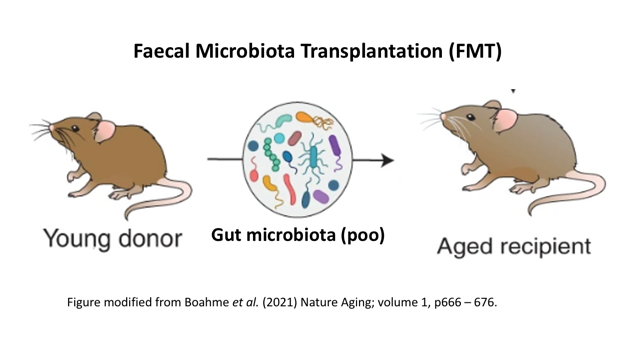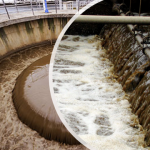FOR ages, human beings have been searching for the elixir of youth. Trillions of pounds sterling have been spent worldwide by those addicted to youth, on cosmetics, plastic surgeries and other home remedies in a bid to turn back the hand of time and remain young, but still time marches on. You can neither cheat time nor nature – young and healthy body today, old and infirm tomorrow.
Join our WhatsApp Channel
But, what if somebody told you that a cure for old age has been found? How far are you willing to go to be young again? Would you literally eat someone’s poo just to remain youthful? Well, if you were willing to do all it takes to be young, you might have to eat someone’s poo!
There are a host of microorganisms living in our bodies. These microorganisms are a mix of bacteria, fungi, protozoa, and viruses. Some of these microorganisms seek to harm us but majority of them are actually beneficial to us, entering into symbiotic relationships with us. They protect us against other harmful microorganisms, they breakdown the food we eat to release energy, and some even produce beneficial chemicals for our body like vitamins and essential amino acids that are required for growth and development.
A collection of all the genetic makeup (i.e. genomes) of the microorganisms in the environment (e.g your body) is called the microbiome, while a collection of those microorganisms seen in specific areas of your body (e.g. stomach) is called the microbiota. Naturally for obvious reasons, the largest collection of microorganisms in the body is in the large intestine or colon, in fact the number of microorganisms in the colon runs into trillions, and are recognised as the gut microbiota.
The gut microbiota is essentially poo but for aesthetic reason, we shall stick to gut microbiota, ok.
The composition of each person’s gut microbiota reflects on the person’s health. Body disorders like lipid metabolism disorder (medically called hyperlipidemia or simply high blood cholesterol), are linked to the state of one’s gut microbiota. Probiotics, which are live bacteria and yeasts often found in yoghurts and palm wine, help to maintain a healthy gut microbiota; so also are fermented foods rich in “good” bacteria. Prebiotics like fruits and vegetables, soya beans, bananas, garlic and whole grains, help to stimulate the growth and activity of beneficial bacteria in the gut so that the health of the host is improved by tilting the gut microbiota equilibrium towards the beneficial bacteria.
The gut microbiota changes in composition and function with age. Recognising the importance of the gut microbiota, scientists are beginning to exploit it in treating patients. A study conducted by scientists from Denmark in 2020 showed that faecal microbiota transplantation (FMT) i.e. feeding one with poo, is an effective form of treatment for a certain type of diarrhoea in aged persons.
The FMT technique works by feeding poo collected from young and healthy individuals to old patients suffering from diarrhoea caused by a bacterium called Clostridium difficile. The poo was fed to the patients ranging between 85 and 92 years either by putting the poo in capsules which the patients then swallowed or by nasojejunal tube in which the crude poo was fed through a thin and soft tube inserted through the nose, and down to the stomach. The microbiota contained in the poo of the healthy donors rejuvenated the old and unhealthy microbiota of the patients.
Such operation as above, is now common and is an effective treatment for bowel disorders associated with recurrent Clostridium difficile colitis. Faecal microbiota transplantation is now routinely done by colonoscopy, enema or encapsulation and is also being trialled to treat other diseases like obesity, food allergies, ulcerative colitis, Crohn’s disease, etc.
A collaborative study between scientists in the UK and Italy shows that FMT may play a role in the search for eternal youth by restoring cognitive decline in the elderly. Faeces from older mice were given by FMT to young adult mice. The gut microbiota of the recipients were changed and this had a negative impact on their memory retention and learning.
This means that age-induced changes in the gut microbiota may impact on the ageing process through regulating host metabolism, healthy brain and robust immunity. And to prove this, scientists at the University of Cork, Ireland, reversed the experiment. Poo from young and healthy mice, 3 – 4 months old were given to 19 – 20-month old (equivalent to oldies in human). The study recently published in Nature Aging, found that signs of ageing were reversed in the old recipient mice. The gut microbiota in the old mice resembled those of the young adult donor mice. More importantly, the hippocampus associated with learning and memory underwent changes and looked similar to those of the young adult mice, so that cognition and memory were improved in the old mice.
But the reality check here is, even though you can now change your gut microbiota, but you cannot change your genome because, it is your genetic makeup!
But on the plus side, you can now age gracefully by having a younger and healthier gut microbiota. Don’t say that poo smells, of course it does but if you wished to look younger, or become smarter you have to eat poo! No pain, no gain.




















Follow Us